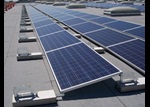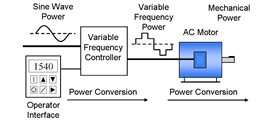- Water >
- Energy Reduction & Renewable Energy
Energy Reduction & Renewable Energy
The Cambridge Water Department (CWD) is routinely implementing new ways to minimize our footprint and increase energy efficiency while providing the highest quality drinking water. Acting as a good environmental steward, we are constantly optimizing the sustainability of our operations to save customers money.
In 2008 CWD updated the HVAC building control system. In addition, the department implemented night time temperature set back along with holiday schedules. The projected energy savings for this project is 39124 kWh per year.
Also, in 2008, CWD upgraded the process area lighting to high efficiency T8 fluorescent light fixtures. During the upgrade, the department also in stalled motion/daylight sensors throughout the process area and office area. Projected energy savings was 473706 kWh per year.
In 2013 the boilers were upgraded. The new high efficiency condensing boilers were projected to save 15600 therms per year.
The fluorescent office lighting was replaced with LED lighting in 2014. The projected energy savings was 58,546 kWh per year.
In 2015 Variable frequency drives were installed on HVAC chilled water and hot water recirculation pumps. A Variable Frequency Drive (VFD) is a type of motor controller that drives an electric motor by varying the frequency and voltage supplied to the electric motor, allowing for increased efficiency.

CWD installed photovoltaic solar panels in 2016. There are 561 panels that can produce 305 Watts each, for a total of 171 kWDC. The projected savings was 207,000 kWh per year.
 In 2018 variable frequency drives were installed on the raw water pumps. Variable Frequency Drives allows the department to control the speed of a motor. This allows the department to run multiple water pumps at reduced speed, but with an increased energy efficiency. The projected energy savings was 1 million kWh per year.
In 2018 variable frequency drives were installed on the raw water pumps. Variable Frequency Drives allows the department to control the speed of a motor. This allows the department to run multiple water pumps at reduced speed, but with an increased energy efficiency. The projected energy savings was 1 million kWh per year.
In addition to the projects for energy efficiency, the department has implemented operational efficiencies. During peak day time hours, the water treatment plant is run at a lower capacity, to reduce energy consumption. In contrast, during off peak hours, the treatment plan runs at full capacity. CWD also reduces energy consumption on high demand or peak energy days, by shutting the water treatment plant down. This reduces the load on the electric grid, and reduces the possibility of black outs.